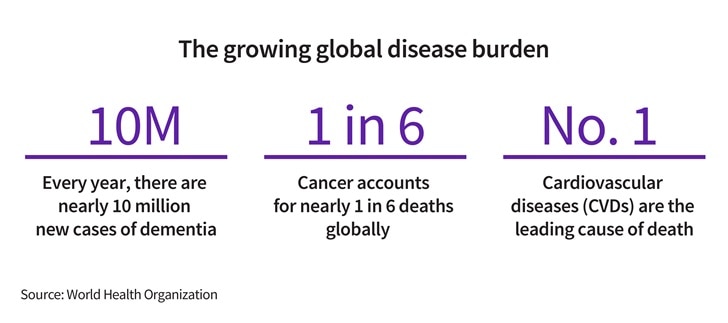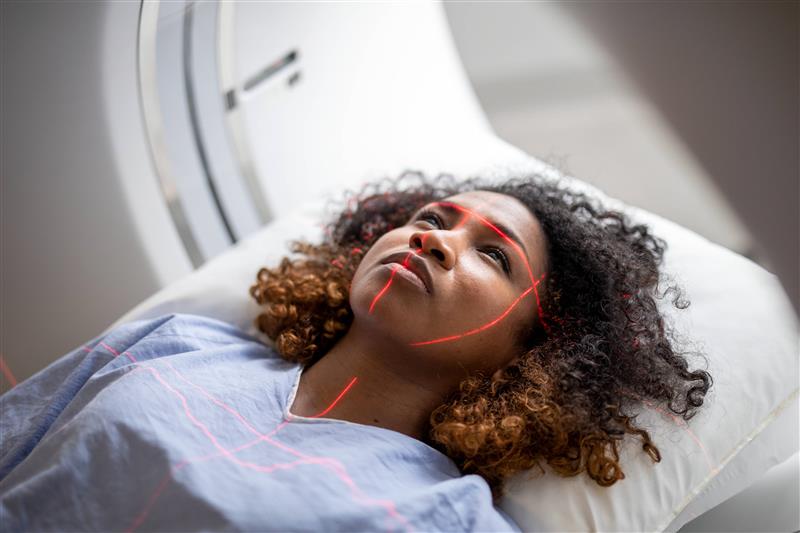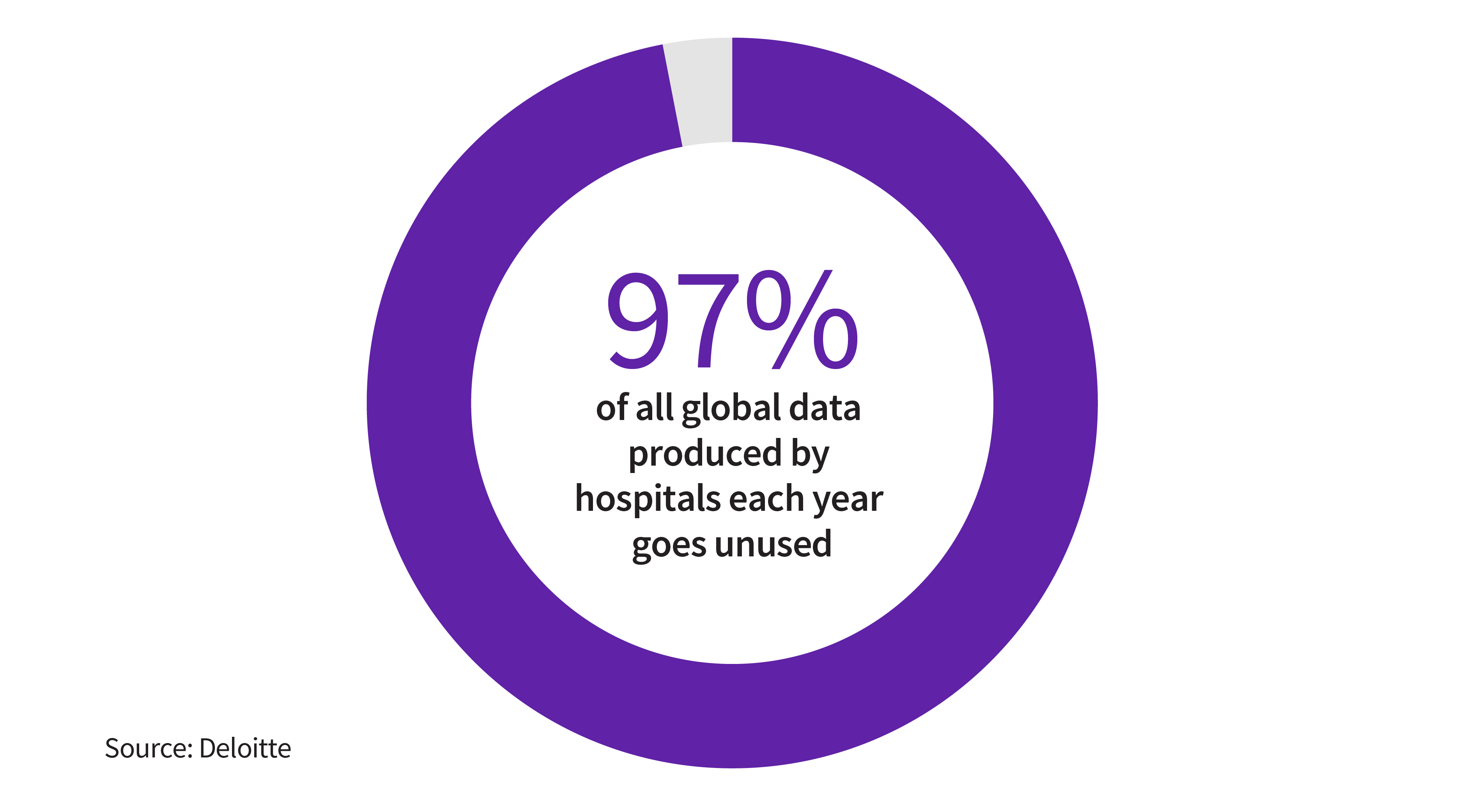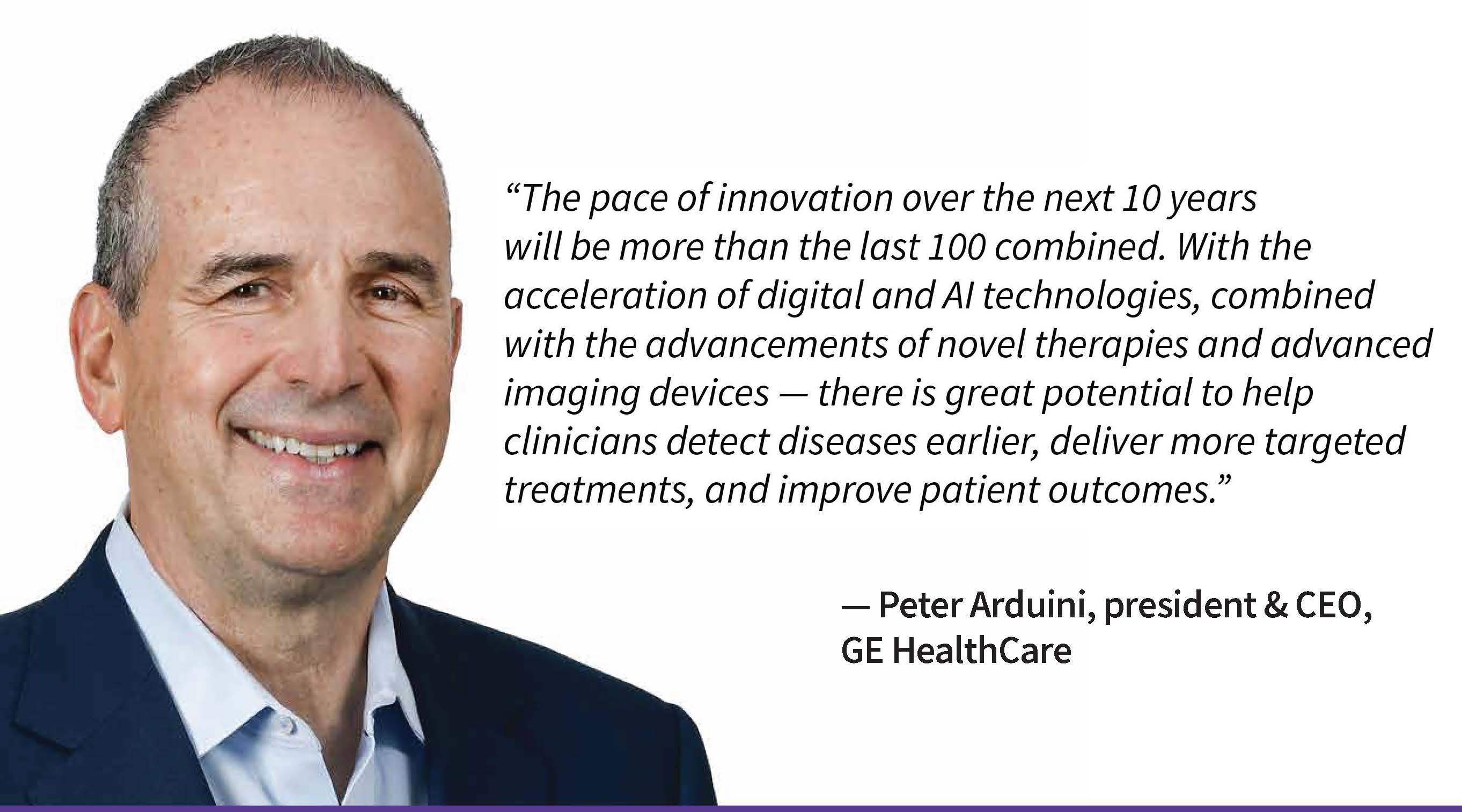Innovation in healthcare is more than just a buzzword–it’s our responsibility. It’s what pushes us to deliver better outcomes for patients and customers, with the shared goal of improving care globally.
For years, our industry has been working to address a convergence of global challenges—an aging population, rising rates of chronic disease, evolving care models, clinician burnout, and persistent workforce shortages. By 2030, 1.4 billion people worldwide will be over the age of 60, and the shortage of healthcare workers is projected to reach 13%. At the same time, complex diseases such as cancer, Alzheimer’s, and cardiovascular disease are becoming increasingly prevalent.
These challenges, while quite pressing, are not insurmountable.
It will take strategic collaboration across disciplines, adoption of new technologies, and a thoughtful approach to harnessing healthcare’s most underutilized resource: data.
This will allow us to deliver a brighter future where precision care–enabling smart devices and data to connect information longitudinally across diseases throughout the patient journey to help clinicians deliver better outcomes–is no longer a promise, but reality.
The pace of innovation over the next 10 years will be more than the last 100 combined. With the acceleration of digital and AI technologies, combined with the advancements of novel therapies, and advanced imaging devices–there is great potential to help clinicians detect diseases earlier, deliver more targeted treatments, and improve patient outcomes.
To harness the full potential of these advances, healthcare systems, clinicians, and industry leaders must continue to work together and embrace new ways of thinking to solve complex healthcare challenges with end-to-end solutions across the entire clinical and patient journey.

It starts with our people. Having the right teams with deep clinical expertise, a passion for healthcare, and unique perspectives that help us think differently to deliver on our commitments to our customers and patients.
Like Tammy Uhl, a Wisconsin-based court reporter and patient advocate, who struggled with metastatic breast cancer and finding an effective treatment plan until receiving a specialized PET imaging scan that helped her doctors determine her cancer subtype and inform her treatment plan. Today, she has no evidence of active disease – a positive indicator for people living with metastatic breast cancer.
Reshaping disease treatment with imaging
Tammy’s experience is one that showcases how we’re moving from a world where imaging was primarily about seeing disease, to one where it’s actively shaping how we treat it.
With ultrasound-based ablation, we’re using imaging guidance to treat conditions non-invasively, reducing the need for surgery. And with minimally invasive platforms, our imaging solutions are helping physicians navigate procedures with more accuracy and confidence, improving outcomes and reducing recovery times.
Diagnostic testing for cardiac diseases is moving from invasive angiography and traditional stress testing toward cardiac MR, PET, and cardiac CT angiography to get a clearer picture of a patient’s heart condition, guiding therapeutic decisions and interventions in real time.
This shift provides an opportunity to work differently with hospitals and health systems who are looking for a trusted partner to co-create strategic solutions that address their greatest challenges, create long-term value, and improve patient lives.
Harnessing data for a clearer picture–and more informed decisions
Central to this transformation is the ability to aggregate, interpret and connect multimodal data longitudinally across the patient journey from screening to diagnosis to treatment through monitoring and maintenance. By integrating data from advanced imaging systems, labs and other sources, clinicians could have a clearer picture of disease progression over time and a path to the most effective treatment.
By taking this approach, healthcare providers across the care pathway–from radiologists, to surgeons, to pathologists, oncologists, and nurses–can collaborate more effectively to deliver a more personalized and precise treatment plan, ultimately improving patient outcomes.
Hospital and healthcare systems are awash in data from various sources, yet only 3% of hospital data is being used due to complexities like data quality, security and privacy concerns, and challenges with interoperability across systems. Imagine the opportunities for healthcare systems, clinicians, and patients, not if, but when we insights from that additional 97% of data. That's where AI can help.
From generative AI applications that could consolidate and summarize complex patient data in one interface, to enterprise solutions that help hospitals and health systems optimize patient flow, streamlining hospital operations and making data-driven decisions brings us closer to deriving meaningful insights from data that goes unused today. And the benefits are across the board: hospital and health system leaders can prioritize improving workflows and alleviating administrative burdens, and clinicians can focus on what’s most important: the patient.
Embracing artificial intelligence (AI) to deliver precision care
A few decades ago, EHRs were considered novel technology, x-rays were read on lightboxes–and now our world is digital, and we’ve seen how technology can enhance daily tasks. AI is the latest in that evolution, bringing new capabilities that can enhance productivity–for example, helping automate repetitive tasks or generative AI generative AI that aims to bring together unstructured medical data into meaningful insights. New multi-modal foundation models with full-body X-ray and full-body 3D MRI, can provide intelligence to a wider range of clinical applications, accelerating the development of healthcare solutions.
Delivering a healthier future for generations
The future of healthcare is bright. How we are innovating, collaborating and thinking differently to solve today’s challenges will deliver a healthier future for generations.
As we work towards this future, we must always keep our people, patients and providers, front and center as we work to create a world where precision care is the standard for all.
Learn more about GE HealthCare’s latest innovations as a trusted global healthcare solutions partner.




